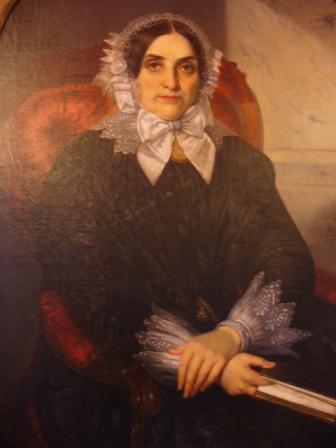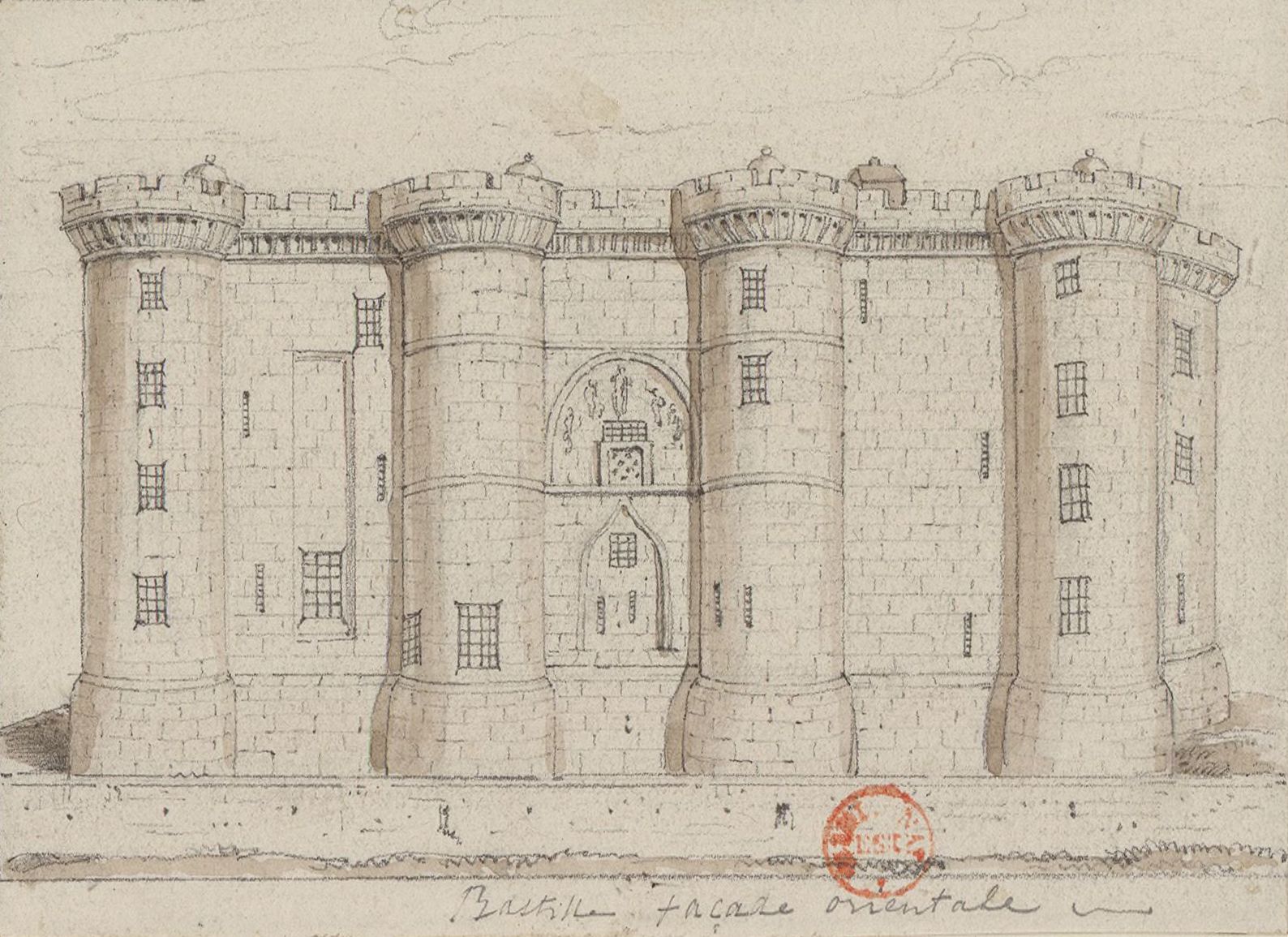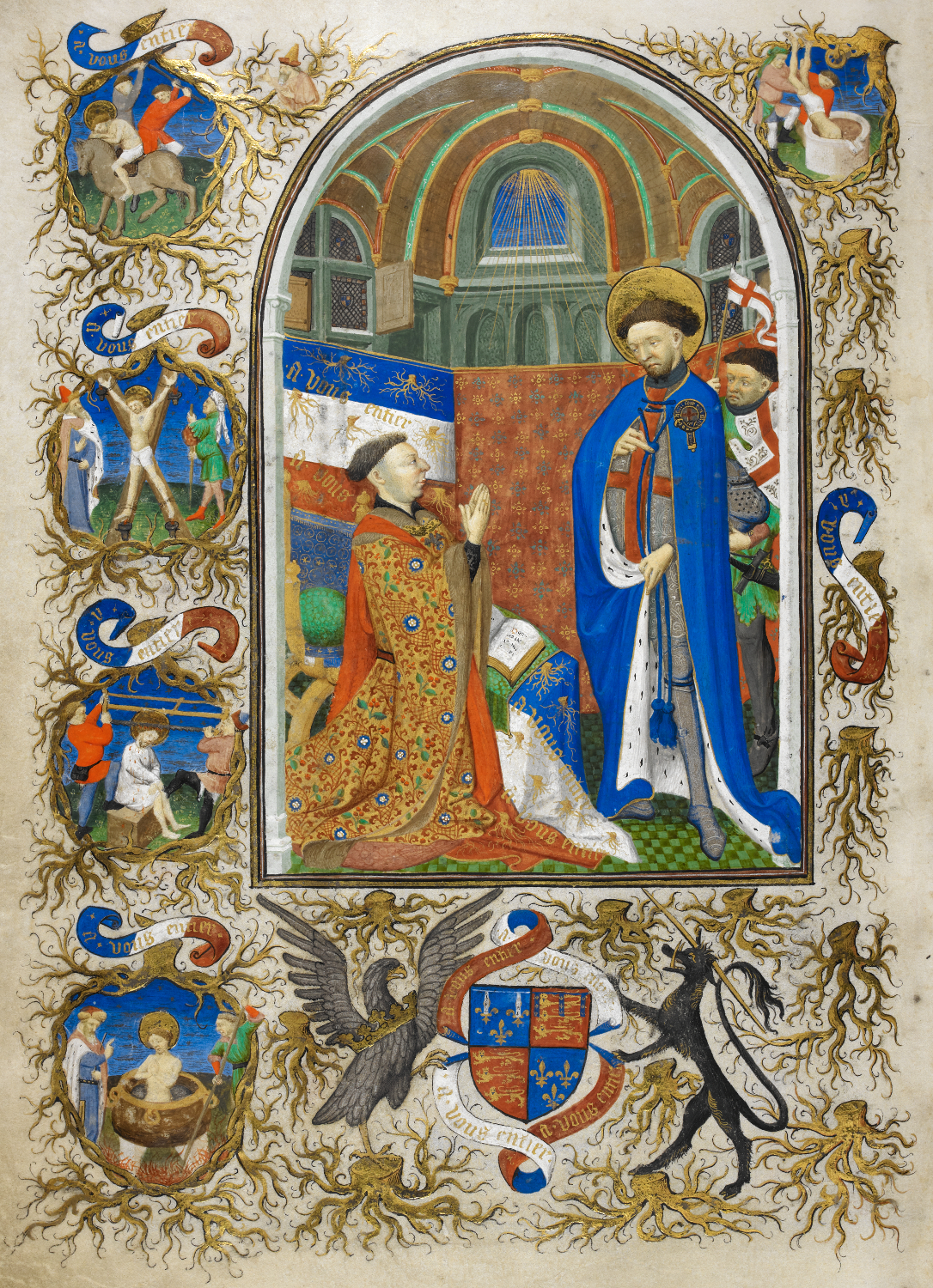|
Arthur De Richemont
Arthur III ( br, Arzhur), more commonly known as Arthur de Richemont (24 August 139326 December 1458), was briefly Duke of Brittany from 1457 until his death. He is noted primarily, however, for his role as a leading military commander during the Hundred Years' War. Although Richemont briefly sided with the English once, he otherwise remained firmly committed to the House of Valois. He fought alongside Joan of Arc, and was appointed Constable of France. His military and administrative reforms in the French state were an important factor in assuring the final defeat of the English in the Hundred Years' War. The name Richemont reflects the fact that he inherited the English title of Earl of Richmond, which was held by previous dukes of Brittany, but his tenure was never recognized by the English crown. At the very end of his life he became Duke of Brittany and Count of Montfort after inheriting those titles upon the death of his nephew Peter II. Richemont had no legitimate iss ... [...More Info...] [...Related Items...] OR: [Wikipedia] [Google] [Baidu] |
Duke Of Brittany
This is a list of rulers of the Duchy of Brittany. In different epochs the sovereigns of Brittany were kings, princes, and dukes. The Breton ruler was sometimes elected, sometimes attained the position by conquest or intrigue, or by hereditary right. Hereditary dukes were sometimes a female ruler, carrying the title duchesse of Brittany. Its principal cities and regions were ruled by counts who often found themselves in conflict with the Breton ruler, or who became the Breton ruler. During the declining years of the Roman Empire, the earliest Breton rulers in Gaul were styled "kings" of the small realms of Cornouaille and Domnonia. Some such kings may have had a form of hegemony over all of the Brythonic populations in the Armorican peninsula, and Riothamus is called King of the Britons by the chronicler Jordanes. However, there are no certain rulers of the whole of Brittany, which was divided into the fiefdoms of local counts. The Duchy of Brittany had its origins in the Ba ... [...More Info...] [...Related Items...] OR: [Wikipedia] [Google] [Baidu] |
List Of Rulers Of Brittany
This is a list of rulers of the Duchy of Brittany. In different epochs the sovereigns of Brittany were kings, princes, and dukes. The Breton ruler was sometimes elected, sometimes attained the position by conquest or intrigue, or by hereditary right. Hereditary dukes were sometimes a female ruler, carrying the title duchesse of Brittany. Its principal cities and regions were ruled by counts who often found themselves in conflict with the Breton ruler, or who became the Breton ruler. During the declining years of the Roman Empire, the earliest Breton rulers in Gaul were styled "kings" of the small realms of Cornouaille and Domnonia. Some such kings may have had a form of hegemony over all of the Brythonic populations in the Armorican peninsula, and Riothamus is called King of the Britons by the chronicler Jordanes. However, there are no certain rulers of the whole of Brittany, which was divided into the fiefdoms of local counts. The Duchy of Brittany had its origins in the B ... [...More Info...] [...Related Items...] OR: [Wikipedia] [Google] [Baidu] |
Seigneur
''Seigneur'' is an originally feudal title in France before the Revolution, in New France and British North America until 1854, and in the Channel Islands to this day. A seigneur refers to the person or collective who owned a ''seigneurie'' (or ''seigneury'')—a form of land tenure—as a fief, with its associated rights over person and property. A seigneur could be an individual—male or female (''seigneuresse''), noble or non-noble (''roturier'')—or a collective entity such a religious community, monastery, seminary, college, or parish. This form of lordship was called ''seigneurie'', the rights that the seigneur was entitled to were called ''seigneuriage'', and the jurisdiction exercised was ''seigneur justicier'' over his fief. In the wake of the French Revolution, seigneurialism was repealed in France on 4 August 1789 and in the Province of Canada on 18 December 1854. Since then, the feudal title has only been applicable in the Channel Islands and for sovereign princ ... [...More Info...] [...Related Items...] OR: [Wikipedia] [Google] [Baidu] |
Duke Of Nemours
Duke of Nemours was a title in the Peerage of France. The name refers to Nemours in the Île-de-France region of north-central France. History In the 12th and 13th centuries, the Lordship of Nemours, in the Gatinais, France, was a possession of the house of Villebéon, a member of which, Gautier, was marshal of France in the middle of the 13th century. The lordship was sold to King Philip III of France in 1274 and 1276 by Jean and Philippe de Nemours. It was then made a county and given in 1364 to Jean III de Grailly, captal de Buch. In 1404, Charles VI of France gave it to Charles III of Navarre and elevated it into a duchy in the peerage of France, in exchange to his ancestral county of Évreux in Normandy. After being confiscated and restored several times, the duchy reverted to the French crown in 1504, after the extinction of the house of Armagnac-Pardiac. In 1507, it was given by Louis XII of France to his nephew, Gaston de Foix, who was killed at the Battle of Ravenna ... [...More Info...] [...Related Items...] OR: [Wikipedia] [Google] [Baidu] |
Bastille
The Bastille (, ) was a fortress in Paris, known formally as the Bastille Saint-Antoine. It played an important role in the internal conflicts of France and for most of its history was used as a state prison by the kings of France. It was stormed by a crowd on 14 July 1789, in the French Revolution, becoming an important symbol for the French Republican movement. It was later demolished and replaced by the Place de la Bastille. The castle was built to defend the eastern approach to the city from potential English attacks during the Hundred Years' War. Construction was underway by 1357, but the main construction occurred from 1370 onwards, creating a strong fortress with eight towers that protected the strategic gateway of the Porte Saint-Antoine heading out to the east. The innovative design proved influential in both France and England and was widely copied. The Bastille figured prominently in France's domestic conflicts, including the fighting between the rival factions o ... [...More Info...] [...Related Items...] OR: [Wikipedia] [Google] [Baidu] |
Louis, Duke Of Guyenne
Louis (22 January 1397 – 18 December 1415) was the eighth of twelve children of King Charles VI of France and Isabeau of Bavaria. He was their third son and the second to hold the titles Dauphin of Viennois and Duke of Guyenne, inheriting them in 1401, at the death of his older brother, Charles (1392–1401). Louis was born between the eighth and ninth hours of the evening in the royal Hôtel Saint-Pol in Paris. He was baptised the next day in the parish church of Saint-Paul, with eight prelates attending, including the abbot of Saint-Denis. Present also was a large assembly of noblemen and ladies. The infant was carried to the font by Duke Louis of Orléans, Pierre ''le Bègue de Villaines'' and Countess Joan of Ligny. They gave him the name Louis and the archbishop of Vienne performed the baptism. In his mother's household The first years of Louis's life were spent in the care of his mother. Only after the death of his elder brother Charles on 13 January 1401 did he ta ... [...More Info...] [...Related Items...] OR: [Wikipedia] [Google] [Baidu] |
Civil War Between The Armagnacs And The Burgundians
{{disambiguation ...
Civil may refer to: *Civic virtue, or civility *Civil action, or lawsuit * Civil affairs *Civil and political rights *Civil disobedience *Civil engineering *Civil (journalism), a platform for independent journalism *Civilian, someone not a member of armed forces *Civil law (other), multiple meanings *Civil liberties *Civil religion *Civil service *Civil society *Civil war *Civil (surname) Civil is a surname. Notable people with the surname include: *Alan Civil (1929–1989), British horn player *François Civil (born 1989), French actor * Gabrielle Civil, American performance artist *Karen Civil (born 1984), American social media an ... [...More Info...] [...Related Items...] OR: [Wikipedia] [Google] [Baidu] |
Burgundian (party)
The Burgundian party was a political allegiance against France that formed during the latter half of the Hundred Years' War. The term "Burgundians" refers to the supporters of the Duke of Burgundy, John the Fearless, that formed after the assassination of Louis I, Duke of Orléans. Their opposition to the Armagnac party, the supporters of Charles, Duke of Orléans, led to a civil war in the early 15th century, itself part of the larger Hundred Years' War. Geography The Duke of Burgundy had inherited a large number of lands scattered from what is now the border of Switzerland up to the North Sea. The Duchy of Burgundy had been granted as an appanage to Philip the Bold in the 14th century, and this was followed by other territories inherited by Philip and his heirs during the late 14th and 15th centuries, including the County of Burgundy (the Franche-Comté), Flanders, Artois and many other domains in what are now Belgium, Luxembourg, the Netherlands and northeastern France. Pr ... [...More Info...] [...Related Items...] OR: [Wikipedia] [Google] [Baidu] |
Armagnac (party)
The Armagnac faction was prominent in French politics and warfare during the Hundred Years' War. It was allied with the supporters of Charles, Duke of Orléans against John the Fearless after Charles' father Louis of Valois, Duke of Orléans, Louis of Orléans was Assassination of Louis I, Duke of Orléans, killed on a Paris street on the orders of the Duke of Burgundy on 23 November 1407. The Armagnac Faction took its name from Charles' father-in-law, Bernard VII, Count of Armagnac (1360–1418), who guided the young Duke during his teens and provided much of the financing and some of the seasoned Gascony, Gascon troops that besieged Paris before their defeat at Saint-Cloud. Origins In 1407, Louis of Valois, Duke of Orléans, Louis of Orléans was assassinated on the order of John the Fearless. Fearing Burgundian (party), Burgundian ambitions, the dukes of Duke of Berry, Berry, List of rulers of Brittany, Brittany, and Duke of Orléans, Orléans, and the counts of Count of Ale ... [...More Info...] [...Related Items...] OR: [Wikipedia] [Google] [Baidu] |
John, Duke Of Bedford
John of Lancaster, Duke of Bedford KG (20 June 138914 September 1435) was a medieval English prince, general and statesman who commanded England's armies in France during a critical phase of the Hundred Years' War. Bedford was the third son of King Henry IV of England, brother to Henry V, and acted as regent of France for his nephew Henry VI. Despite his military and administrative talent, the situation in France had severely deteriorated by the time of his death. Bedford was a capable administrator and soldier, and his effective management of the war brought the English to the height of their power in France. However, difficulties mounted after the arrival of Joan of Arc, and his efforts were further thwarted by political divisions at home and the wavering of England's key ally, Duke Philip of Burgundy and his faction, the Burgundians. In the last years of Bedford's life, the conflict devolved into a war of attrition, and he became increasingly unable to gather the necessary ... [...More Info...] [...Related Items...] OR: [Wikipedia] [Google] [Baidu] |
Henry IV Of England
Henry IV ( April 1367 – 20 March 1413), also known as Henry Bolingbroke, was King of England from 1399 to 1413. He asserted the claim of his grandfather King Edward III, a maternal grandson of Philip IV of France, to the Kingdom of France. Henry was the first English ruler since the Norman Conquest, over three hundred years prior, whose mother tongue was English rather than French. Henry was the son of John of Gaunt, Duke of Lancaster, himself the son of Edward III. John of Gaunt was a power in England during the reign of Henry's cousin Richard II. Henry was involved in the revolt of the Lords Appellant against Richard in 1388, resulting in his exile. After John died in 1399, Richard blocked Henry's inheritance of his father's duchy. That year, Henry rallied a group of supporters, overthrew and imprisoned Richard II, and usurped the throne, actions that later would lead to what is termed the Wars of the Roses and a more stabilized monarchy. As king, Henry faced a ... [...More Info...] [...Related Items...] OR: [Wikipedia] [Google] [Baidu] |
Château De Suscinio
The Château de Suscinio or de Susinio is a Breton castle, built in the late Middle Ages, to be the residence of the Dukes of Brittany. It is located in the commune of Sarzeau in the département of Morbihan, near the coast of the Atlantic ocean. The spectacular site comprises the moated castle, a ruined chapel, a dovecote, and a few ruined outbuildings. History Designed to be a place of leisure, between the seaside and a forest full of game for hunting, the castle's first ''logis seigneurial'' (seigniorial house) dates from the beginning of the 13th century. The castle was fortified and enlarged, at the end of the 14th century, when the heirs of the duchy had to fight to keep their assets (Brittany was not yet fully united to France and did not become so until 1514), after the castle was taken by Bertrand du Guesclin, the infamous Constable of France. John V and John VI constructed a new seigniorial residence block with a large, new corner tower known as the ''Tour Neuve''. A c ... [...More Info...] [...Related Items...] OR: [Wikipedia] [Google] [Baidu] |





